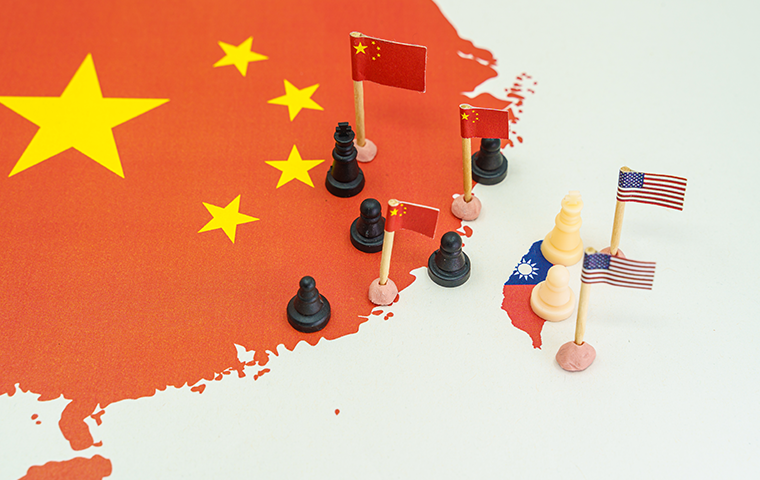BOJ Approves ETF Sales: The Start of a “Quiet Dialogue” with Markets
Related Articles
The First Step Toward an “Unusual Exit” that Shook the Market
On September 19, 2025, the Bank of Japan (BOJ) made a landmark decision in its monetary policy history. At its Monetary Policy Meeting, the central bank announced that it would begin the gradual sale (disposal) of its long-held exchange-traded funds (ETFs) and Japanese real estate investment trusts (J-REITs). For many market participants, the decision came as a surprise. Immediately after the announcement, Tokyo’s stock market reacted negatively—the Nikkei 225, which had been hovering near record highs until just before the meeting, fell by more than 1%. Meanwhile, the yen strengthened as markets priced in future interest-rate hikes, signaling that investors clearly saw the move as part of a tightening cycle.
The BOJ began purchasing ETFs in 2010 as part of its fight against deflation, expanding its holdings dramatically under former Governor Haruhiko Kuroda’s “unprecedented easing” policy. Although new purchases had already been halted in March 2024, the BOJ’s balance sheet still contained roughly ¥37.1 trillion in ETFs at book value—and far more at market value as of September 2025—making it effectively the largest “silent shareholder” in the Japanese stock market. The market’s sensitivity, however, was not due to the scale of the planned sales, but to what the decision represented: a clear signal that the BOJ was taking the next step in its “policy normalization” process—moving into the uncharted territory of balance sheet reduction, or quantitative tightening (QT). With this move, Japan’s central bank—albeit cautiously—aligned itself with the U.S. Federal Reserve and the European Central Bank, which had already embarked on QT. For global investors, this marked the collapse of a long-standing assumption: that “Japan alone would continue monetary easing indefinitely.”
The Signals and Safety Mechanisms Behind the “100-Year Plan”
A closer look at the details reveals the extraordinary caution of this policy. The BOJ set an annual sale pace of roughly ¥330 billion in ETFs and ¥5 billion in J-REITs—about ¥335 billion in total. From the perspective of the BOJ’s enormous holdings, this is a trivial amount. At the post-meeting press conference, Governor Kazuo Ueda sought to calm markets with a striking remark: at this pace, it would take “over 100 years” to sell all of the BOJ’s ETFs.
Why announce the start of such a policy only to downplay its effect by invoking a “100-year” timeline? This reveals the BOJ’s sophisticated communication strategy—a form of “quiet dialogue” with the market. It carries a dual message. First, the BOJ must signal to markets and hawkish board members that “we are steadily moving toward normalization.” Second, it must simultaneously avoid any market turmoil reminiscent of past “BOJ shocks.” Hence the simultaneous issuance of two messages: the symbolic “start of sales” and the practically nullifying “100-year” timeline. This is a refined form of forward guidance—reassuring investors worried about short-term supply-demand pressure while affirming the bank’s commitment to eventual balance-sheet reduction.
This cautious stance is embedded in the framework itself. The sales pace references the BOJ’s past “successful experience” selling equities it had purchased from financial institutions for financial stability purposes—sales completed in July 2025 without disrupting the market. Moreover, the BOJ will conduct ETF sales via trust banks, allowing for “temporary adjustments or suspensions” depending on market conditions. The pace itself can also be revised in future policy meetings. These features underline that the BOJ’s top priority in selling ETFs is not speed or completion, but the preservation of financial stability.
The Footsteps of the Hawks that the Market Truly Feared

Yet the turbulence on September 19 cannot be explained by the “100-year” ETF plan alone. A more significant shift occurred beneath the surface. While the ETF sale decision passed unanimously, two Policy Board members voted against keeping the key policy rate (the uncollateralized overnight call rate) unchanged—they instead called for an interest-rate hike. Analysts identified the dissenters as board members So Takata and Naoki Tamura, both known for their hawkish stance.
Thus, the true cause of the market’s volatility—falling stocks and a stronger yen—was not the modest ¥330 billion annual ETF sale itself, but the fact that vocal hawks within the BOJ’s top decision-making body had openly begun pressing for additional rate hikes. Why then did those who opposed holding rates steady vote unanimously for ETF sales? The most logical interpretation is compromise. Inside the Policy Board, pressure from hawks for an early rate increase is intensifying. Meanwhile, Governor Ueda’s executive team remains cautious, noting concerns over “slowing overseas economies” in its statement. As a middle ground, the board approved a move with symbolic importance—a “step toward normalization”—but no real market impact (the “100-year plan”).
In essence, the ETF sale served as both a concession to appease hawks and a stabilizing gesture to reassure markets—a reflection of Ueda’s finely tuned sense of balance. However, markets did not take the compromise at face value. Instead, they focused on the significance of two dissenting votes. Investors concluded that Governor Ueda would, before long—perhaps as soon as October, according to many economists—be forced to accept the hawks’ demand for an additional rate hike. This anticipation explains the market’s shift toward pricing in higher interest rates (stronger yen, weaker equities).
An Irreversible Step Toward Normalization and What It Means for Global Investors

The September 19 decision was far more than a technical adjustment to the BOJ’s balance sheet. It marked the beginning of the “unwind” of a 15-year-long, unprecedented experiment in central banking—direct purchases of risk assets (ETFs) begun in 2010. This step is irreversible. With the BOJ now positioning itself to combat inflation (rather than deflation) and facing internal pressure for rate hikes, a return to net ETF buying is politically and economically inconceivable—barring a major financial crisis.
For overseas investors, the implication is stark: the BOJ is no longer the market’s ally. The long-standing “BOJ put”—the expectation that the central bank would support the market by buying ETFs during downturns—is gone. From now on, the BOJ will, albeit very slowly, become the market’s largest seller. The focus for financial markets has shifted entirely away from the “100-year” pace of ETF sales. Instead, all eyes are on the pace and timing of further rate hikes—and on when and how the BOJ will begin reducing its far larger government bond holdings, the core of its balance sheet.
The BOJ itself acknowledged in its statement that while Japan’s economy is “growing moderately,” challenges remain—from “slowing overseas economies” to the impact of rising domestic prices on consumer sentiment. Steering policy will remain difficult. Yet the ETF sale marks only the visible tip of the iceberg; beneath the surface looms the much larger issue of “additional rate hikes,” approaching faster than markets expected. Japan’s monetary regime has now reached a decisive turning point—from an era of “fighting deflation” to one of “normalization under inflation.” Investors must fundamentally rethink strategies built on the BOJ’s protective presence—such as yen carry trades or reliance on BOJ-backed support for Japanese equities—because that safety net no longer exists.



